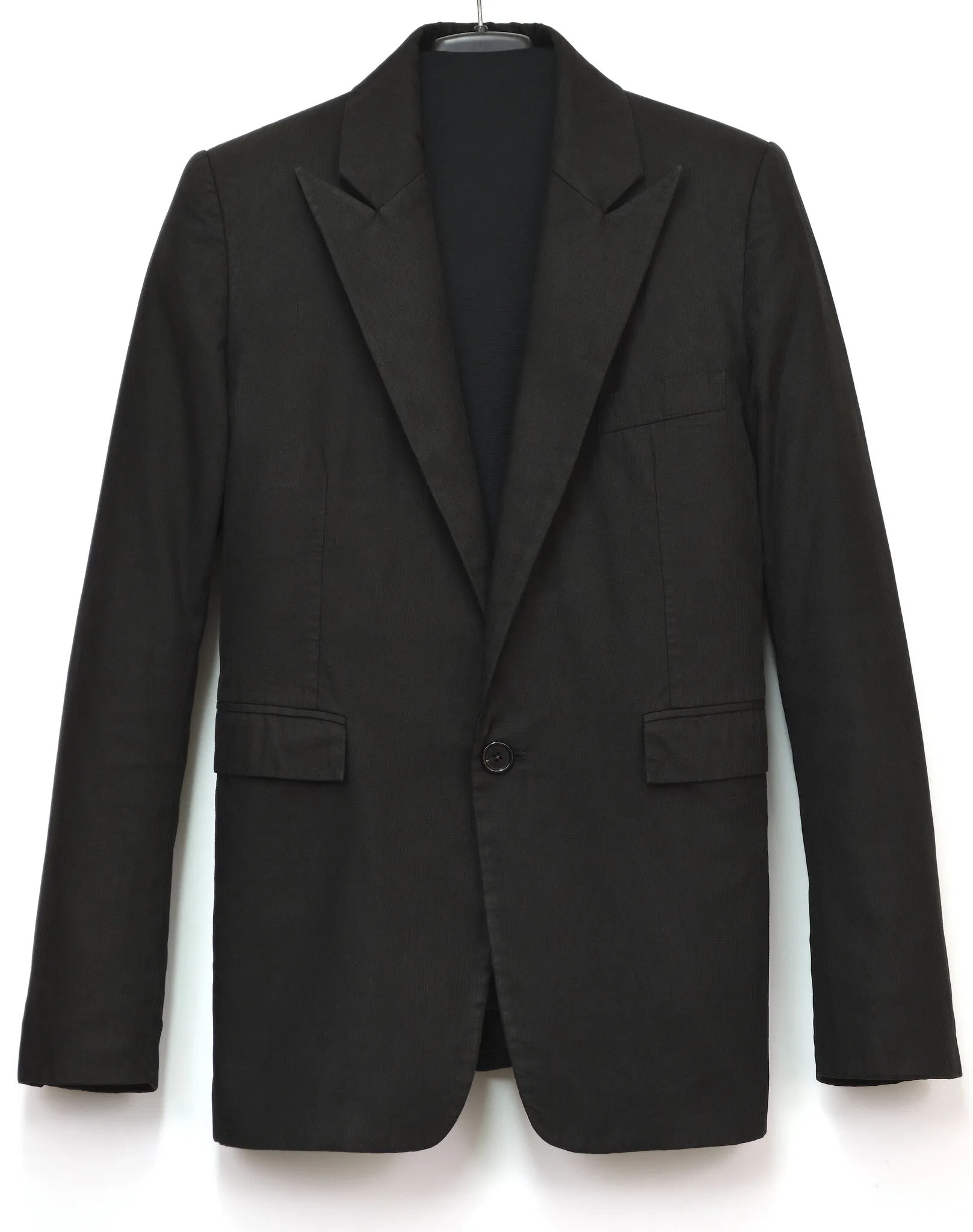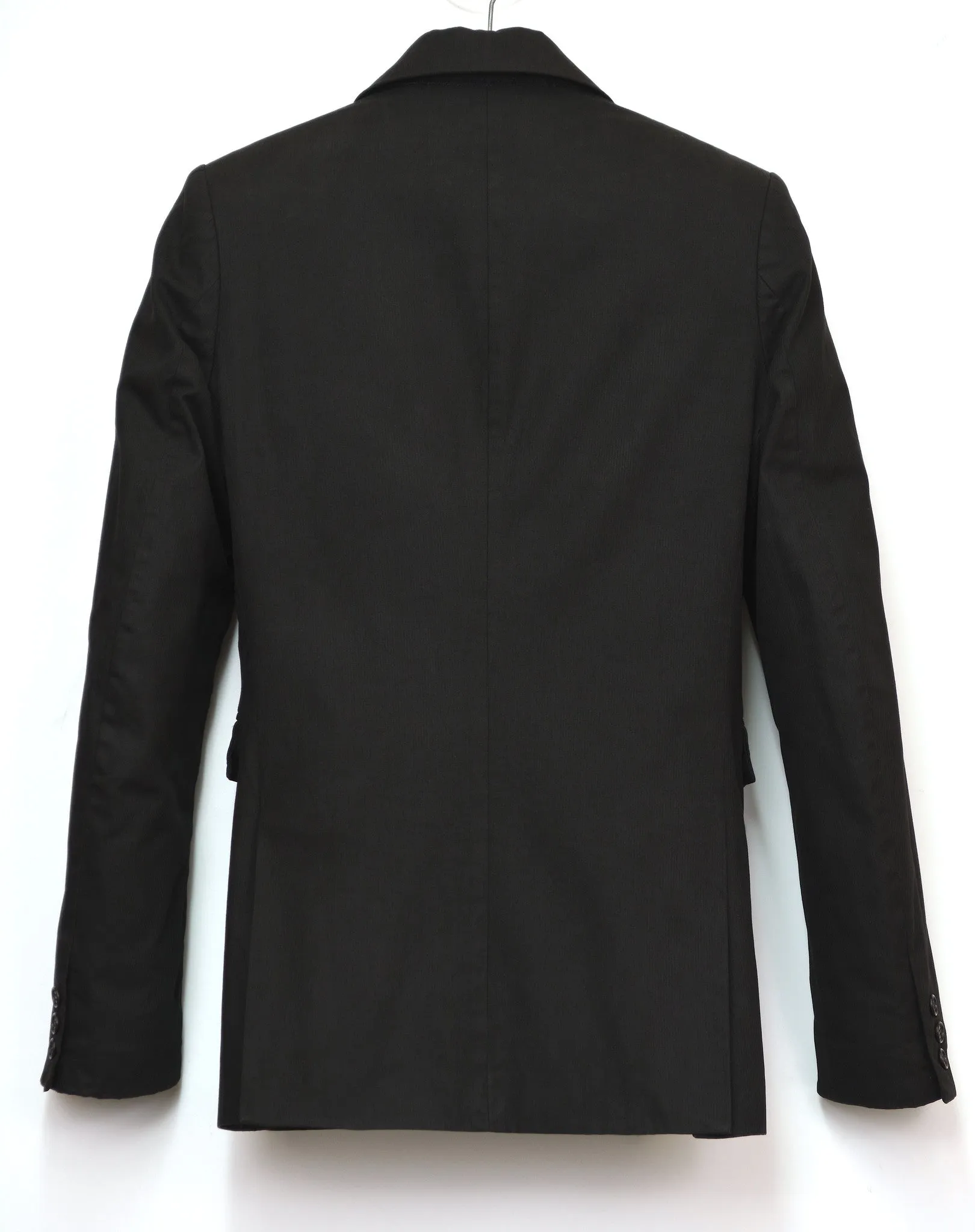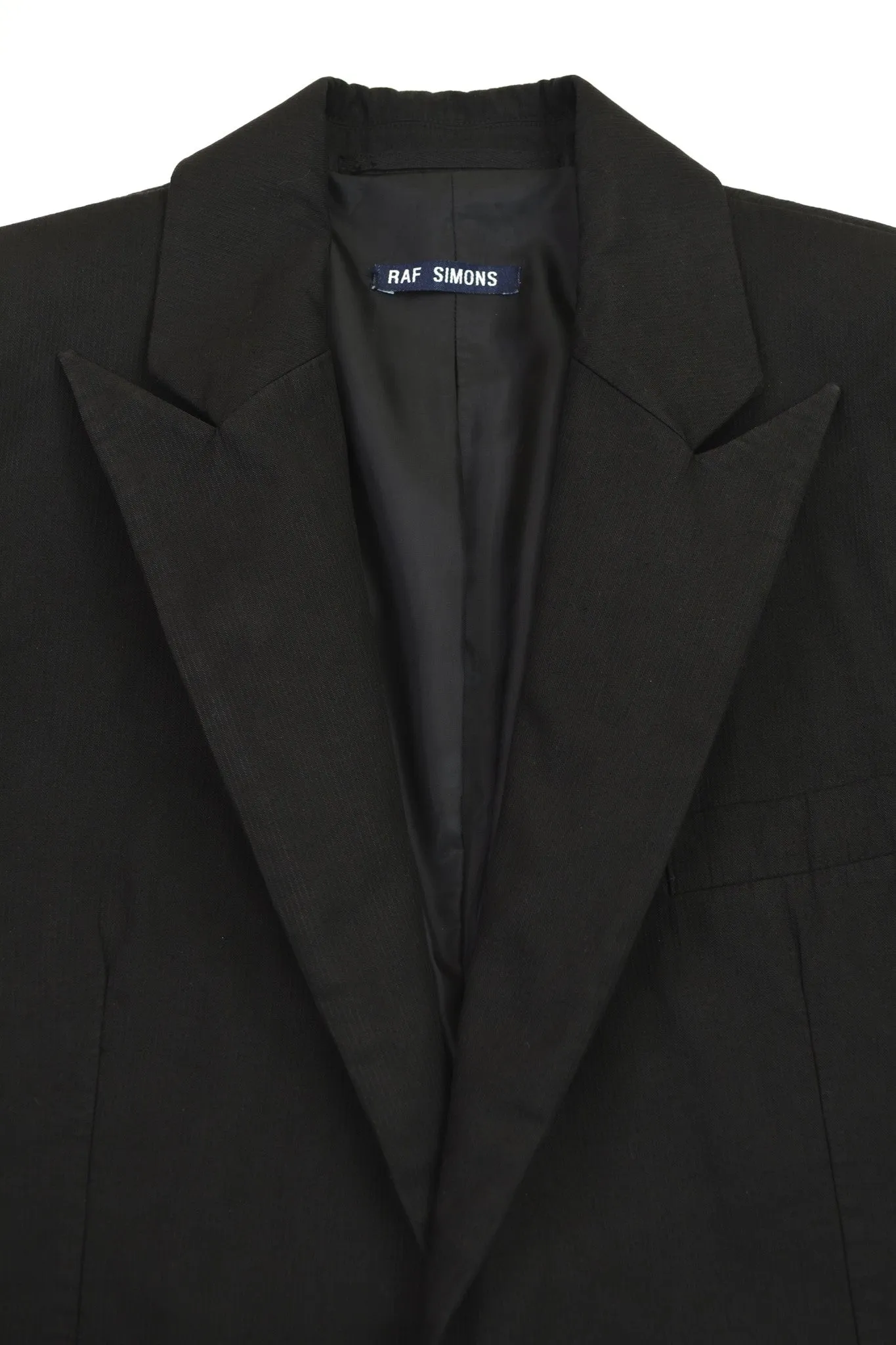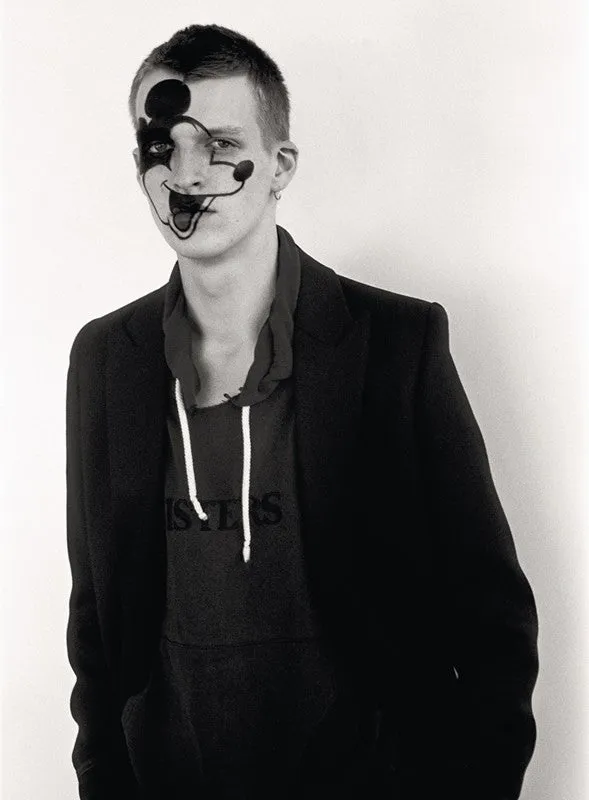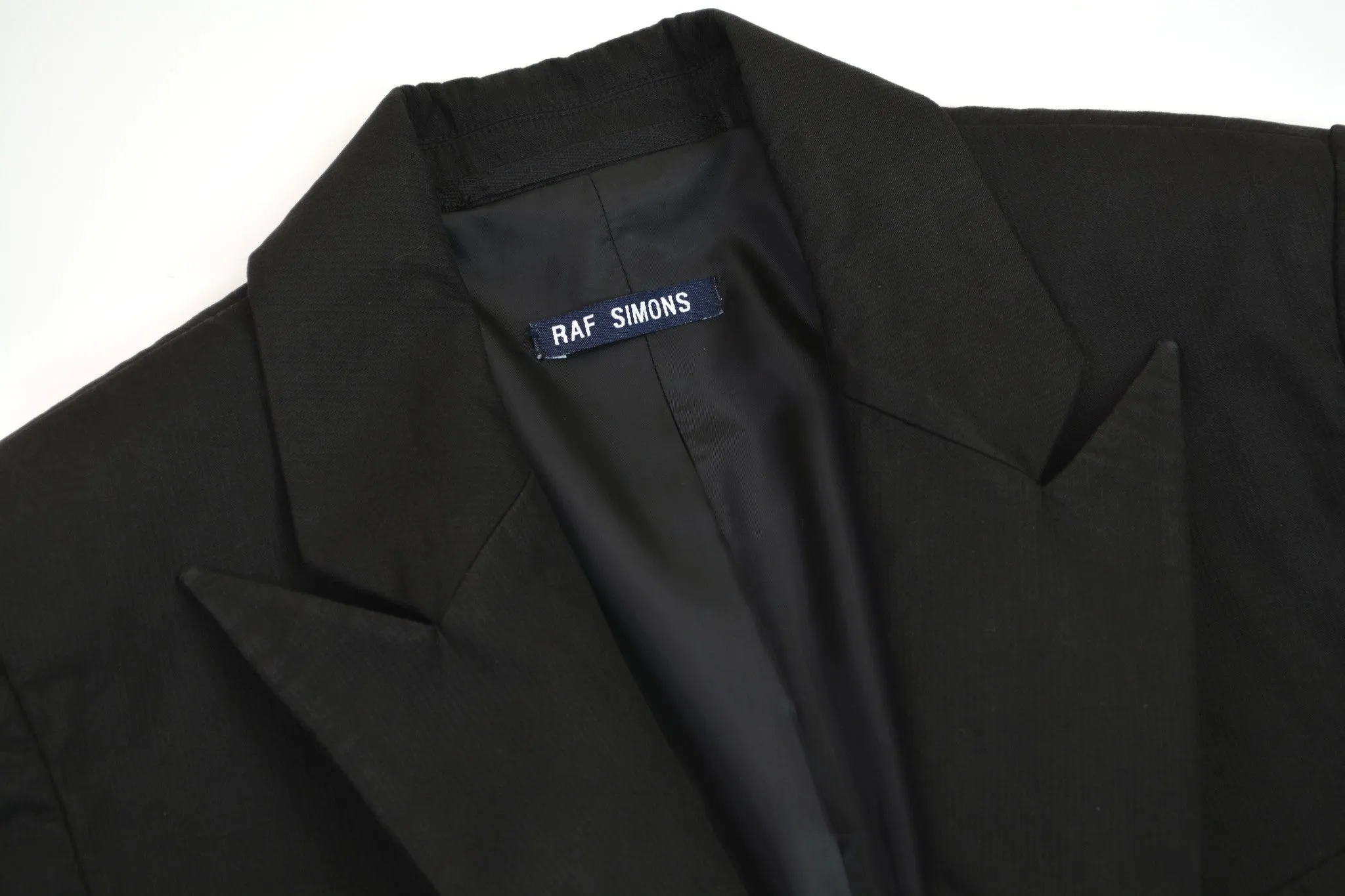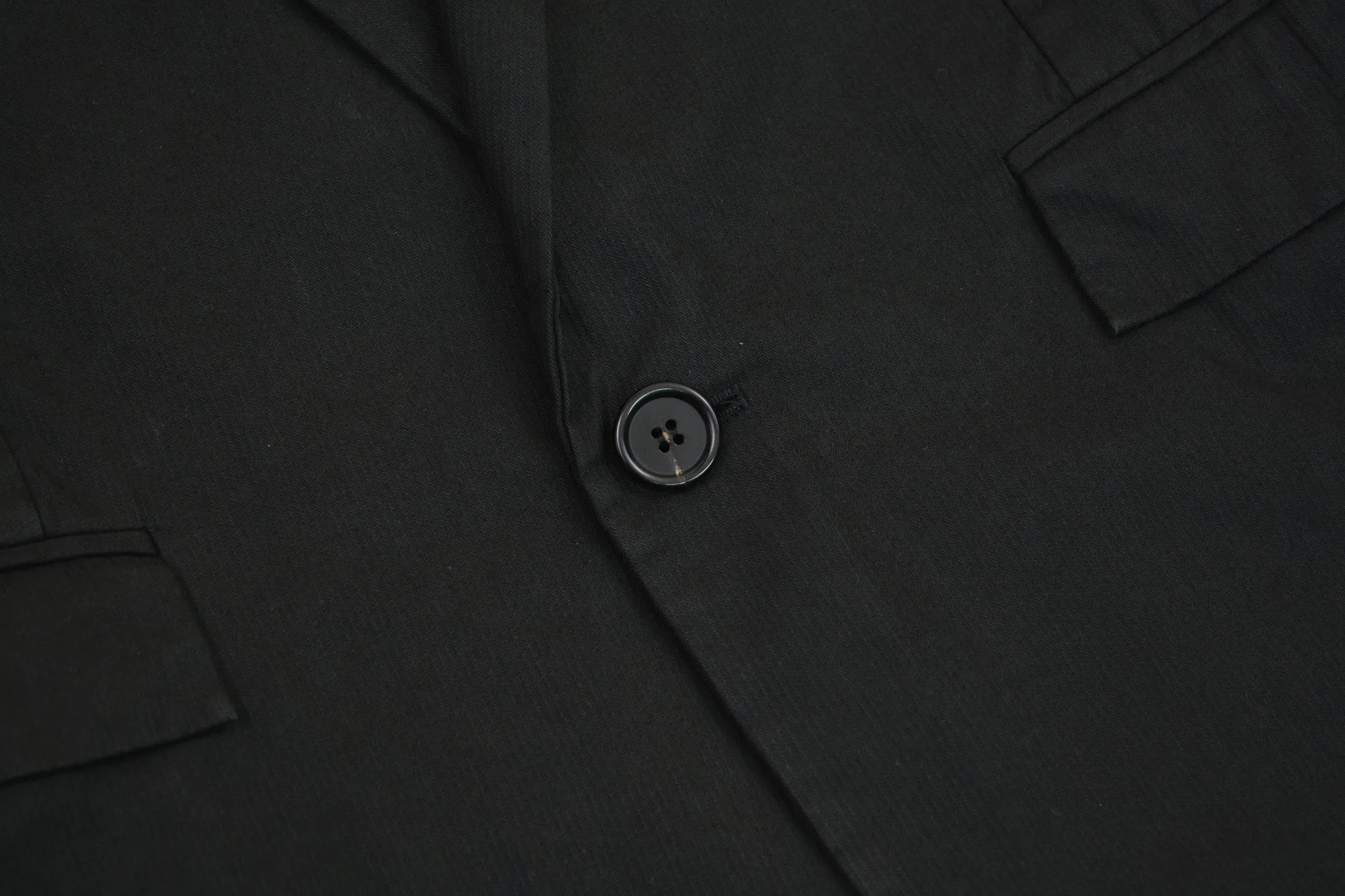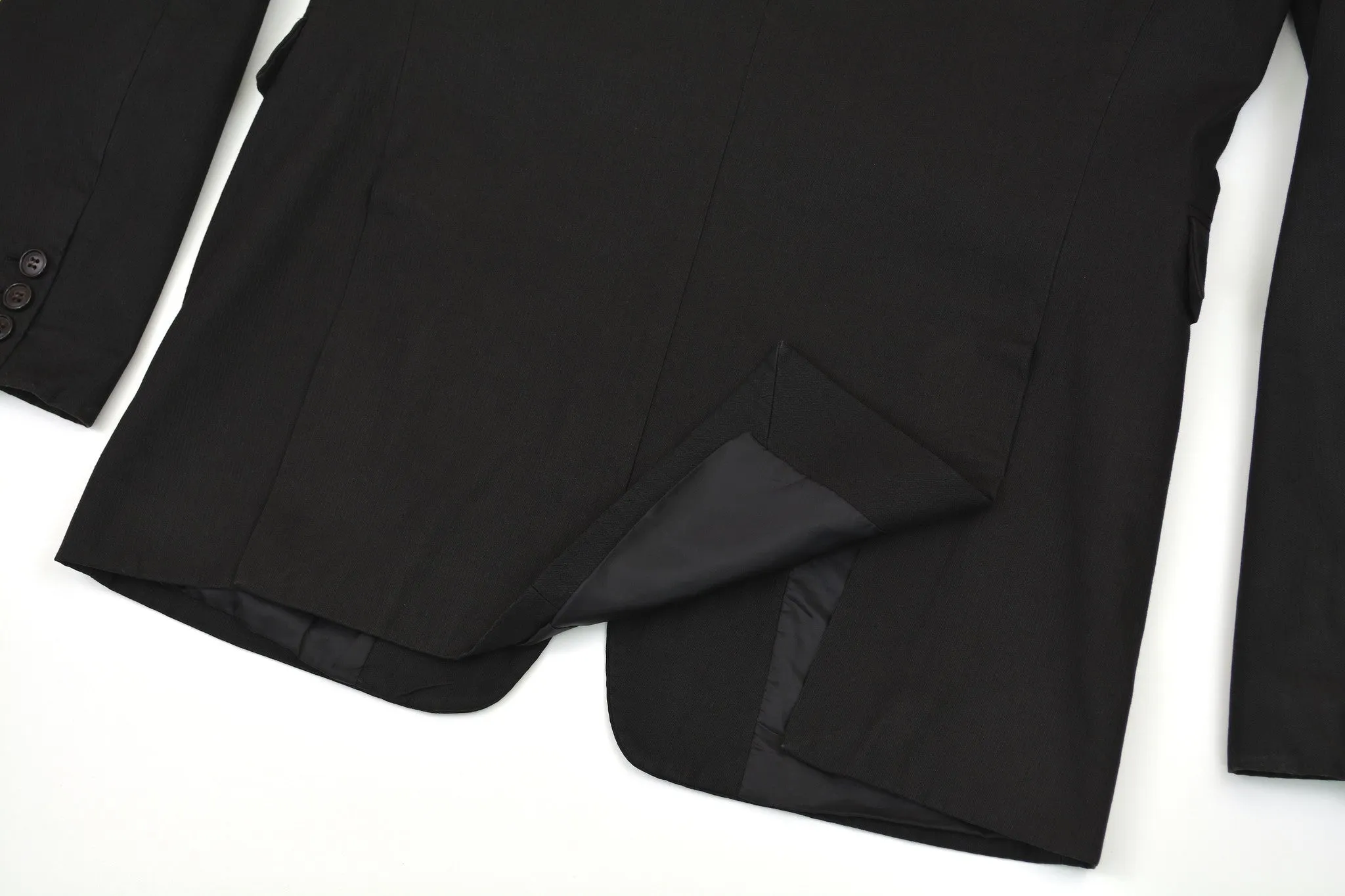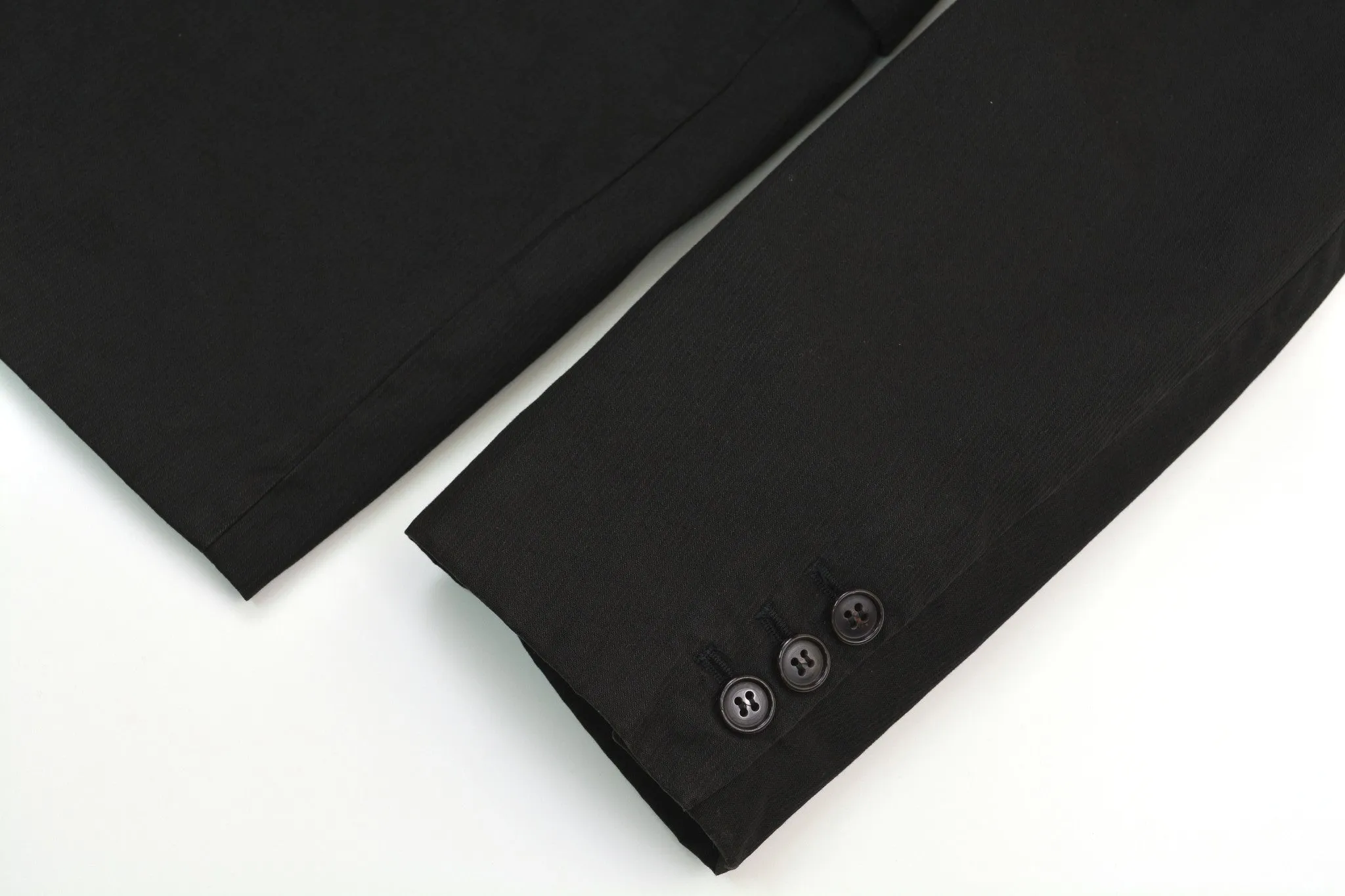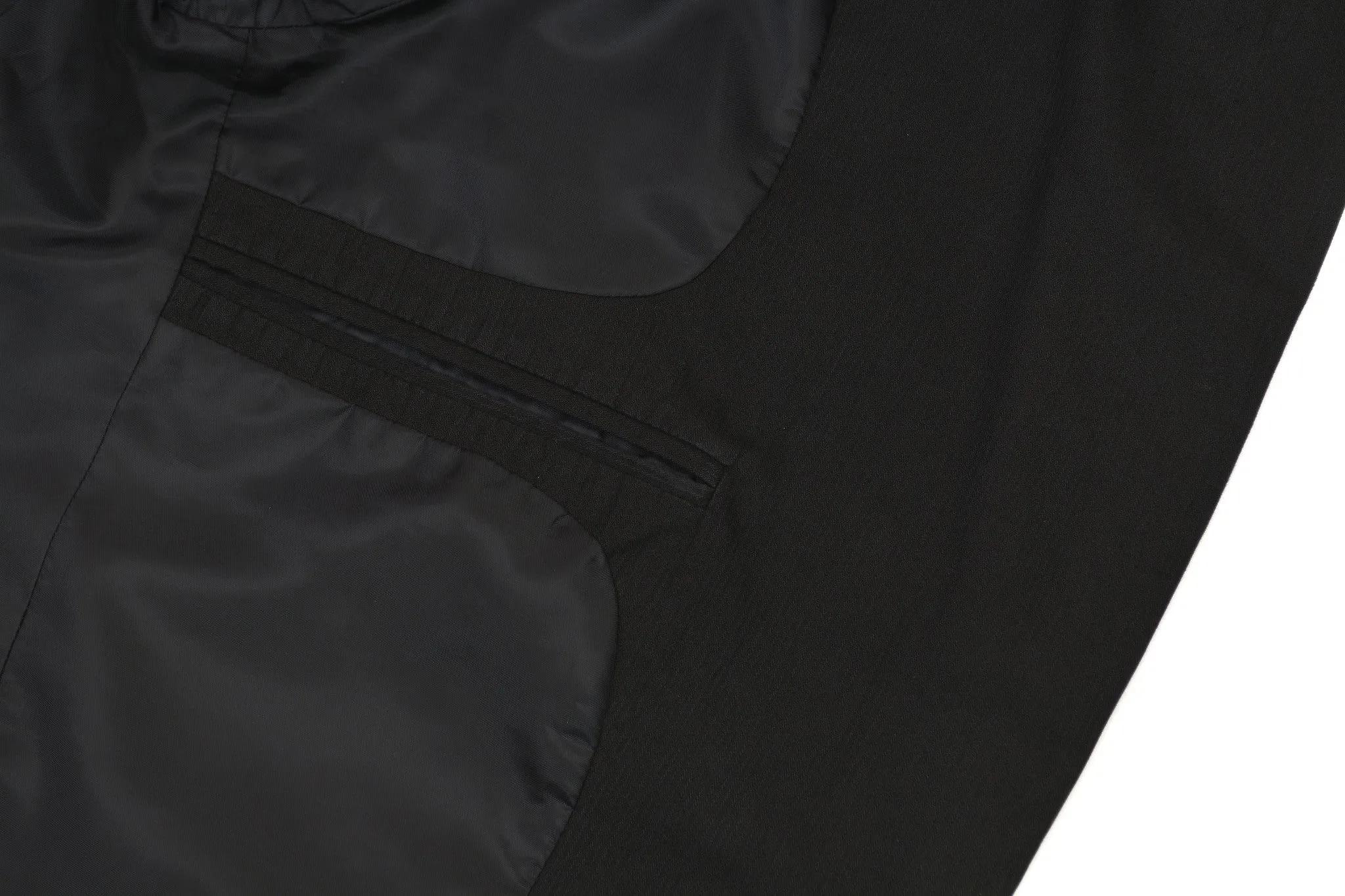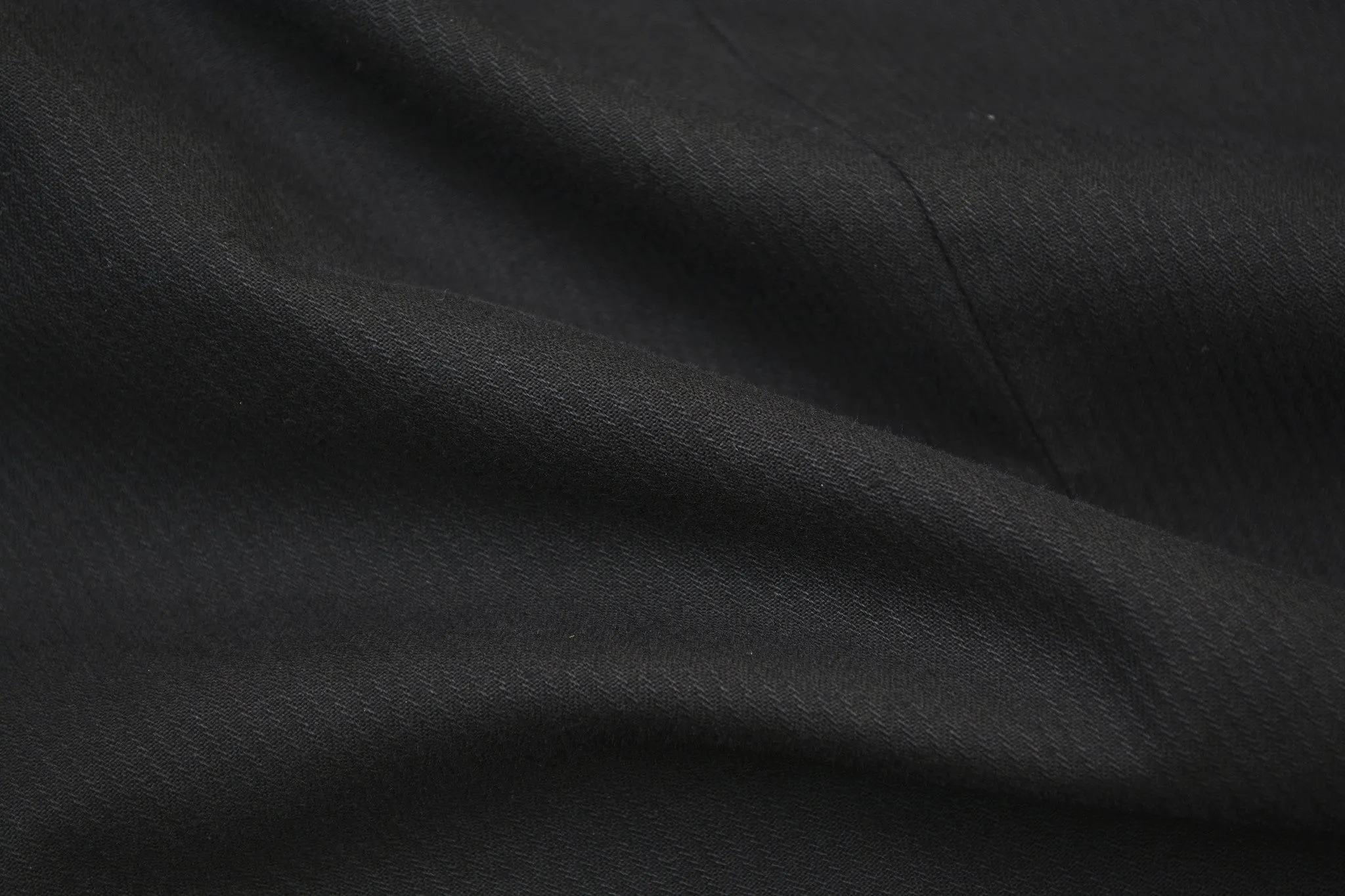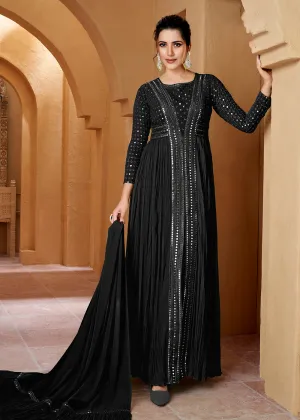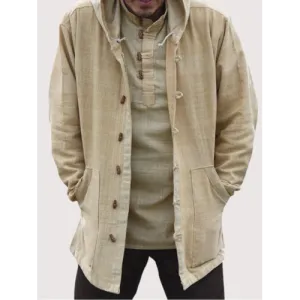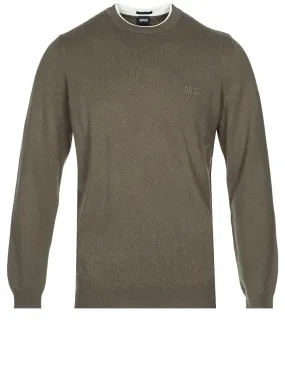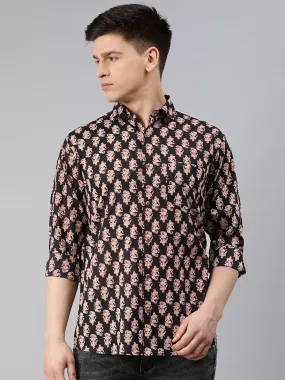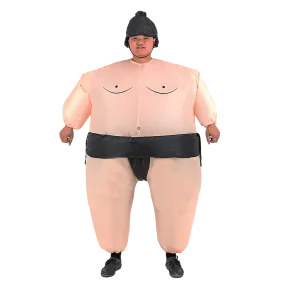Size 48: Best for an IT 48 - 38 Chest - S/M or an IT 46 - 36 Chest - S.
Raf Simons tailored jacket from S/S 1998 'Black Palms'. In excellent used condition; all exterior pockets remain sewn shut. Made in Belgium.
In our view, Raf Simons's tailoring offers one of the most interesting and nuanced expressions of his subculture-inspired vision. On a first impression, the absence of graphic decorations evokes associations with traditional menswear. At the same time, however, Simons's progressive attitude ensured that his tailoring was highly unconventional and like nothing that had come before him. Cathy Horyn :
'Simons is probably the most influential men's-wear designer of the last decade. "He did everything before anyone else, and everybody has copied him," Marie-Amelie Sauve, the stylist for Balenciaga, said. Although Simons is virtually unknown outside the small world of European men's fashion (he shows in Paris), his effect on the way young men dress cannot be overstated. Only with training, genius, intoxicating amounts of culture and possibly a discreet drug habit have a handful of designers been able to change the shape of clothes. Simons, without any of these advantages, has done it three times. The first time was in the mid-1990's, at the beginning of his career, when he came out with suits that were cut unusually small in the shoulders. [...] If Gucci's caftans and Jean Paul Gaultier's cowboy chaps didn't represent the same emotional trip to this generation, Simons's minimalist suits did. They became the dominant silhouette of the late 90's. I once asked him what made him think of that shape. As usual, he had a straightforward explanation. "It was just because we were so small," he said.' (our emphasis)
Simons's signature narrow shoulderline and razor-sharp proportions gave an unexpectedly youthful element to classic garments and, for the first time, people with slender frames could find tailoring that was designed for their profile. While Simons's much-coveted streetwear glorifies youth cultures through visuals, it could be argued that Raf Simons tailoring takes this attitude and gives it real substance though craft and sartorial know-how.
This blazer was Black Palms' signature tailored jacket and its shape is quintessential Simons. The front has a high button stance that leads to striking narrow peak lapels which can also be seen in . This aggressive shape was a hallmark of Raf's early tailoring was first introduced for S/S 1997 (pictured: S/S 97, S/S 98, A/W 98 runway and A/W 00). Interestingly, this design's official name is SATAN according to an early price catalogue. Welt pockets with flaps and a double vent at the back complete the classic design. The cut is sharp and flattering, with a slightly shorter length and narrow structured shoulders. The fabric is a medium-weight cotton with subtle vertical stripes that has been overdyed for a deep colour with a slightly worn finish. This dying technique was used extensively in Simons's iconic 'Consumed' collection and lends a somewhat rugged element to the severe design.
The jacket is constructed to Simons's typical standard, with precise canvasing that gives it an effortlessly structured silhouette. Likewise, the exaggerated lapels have a beautiful three-dimensional shape. The sleeves are finished with three functional buttons and the undercollar features a black felt insert. The interior is fully lined in smooth viscose sateen and features two pockets. Finally, the neck features a grosgrain hanging tab and all buttons are crafted from genuine buffalo horn.
Overall, this blazer captures the essence of Simons's early tailoring. Drawing inspiration from Post-Punk fashion as well as traditional tailoring, Simons created suits that were precise and exceptionally good looking. The importance of his work in shaping contemporary menswear cannot be understated. Strongly recommended.




